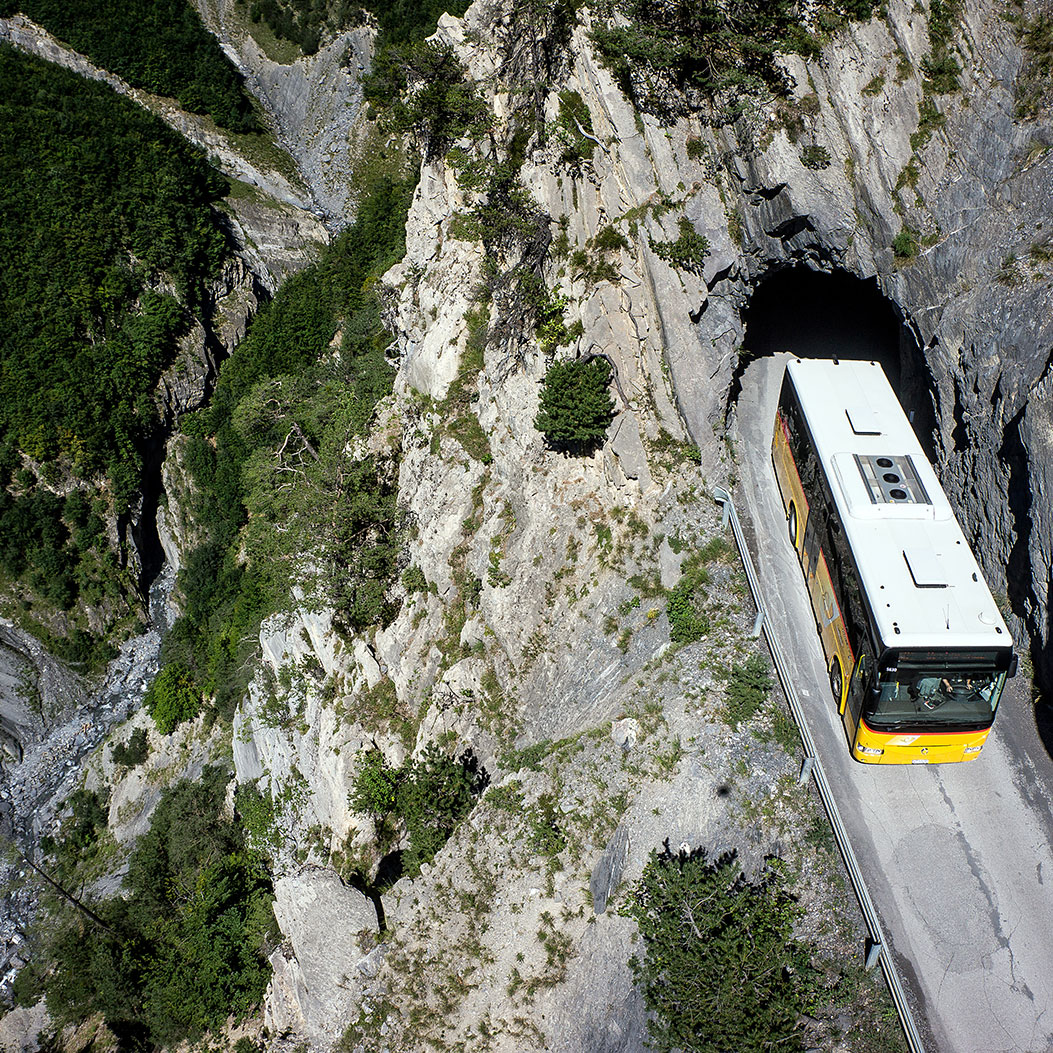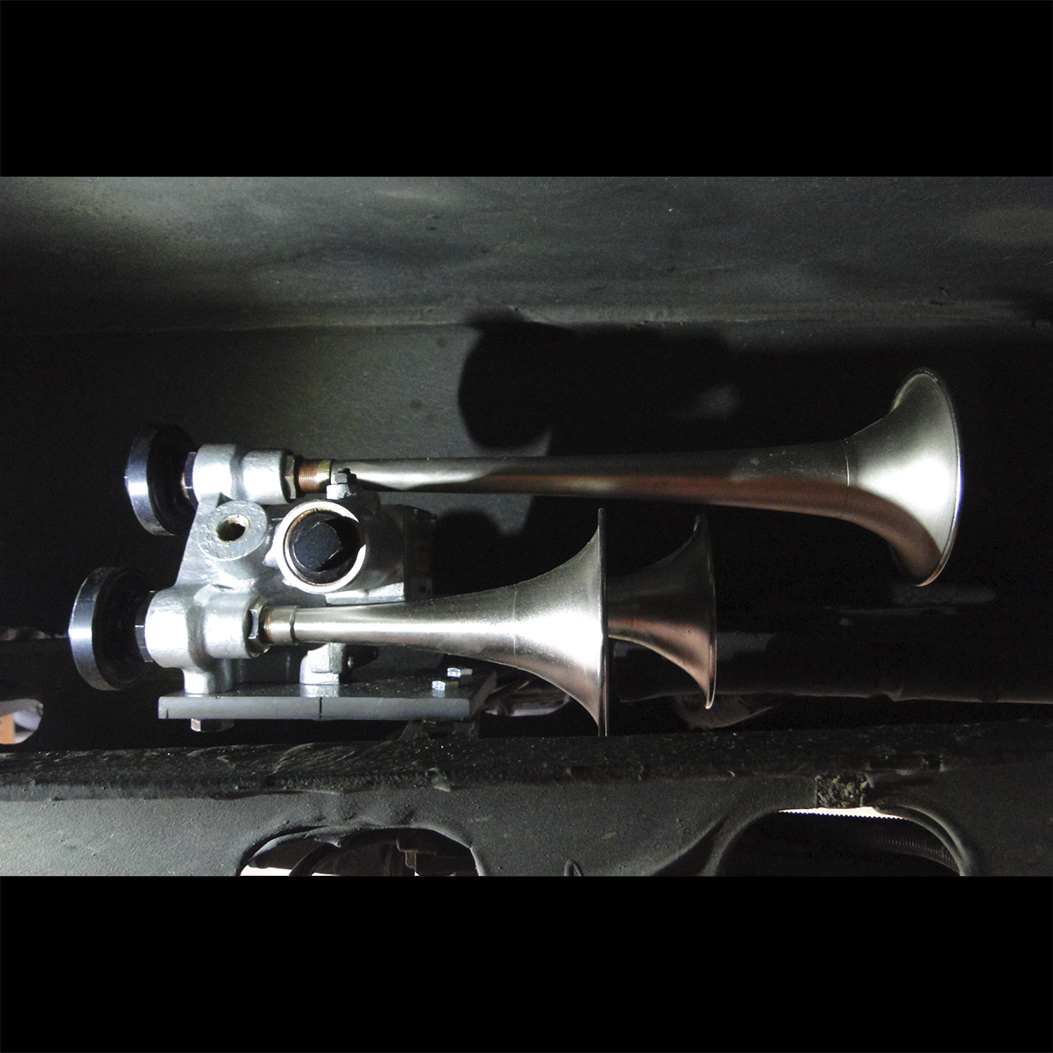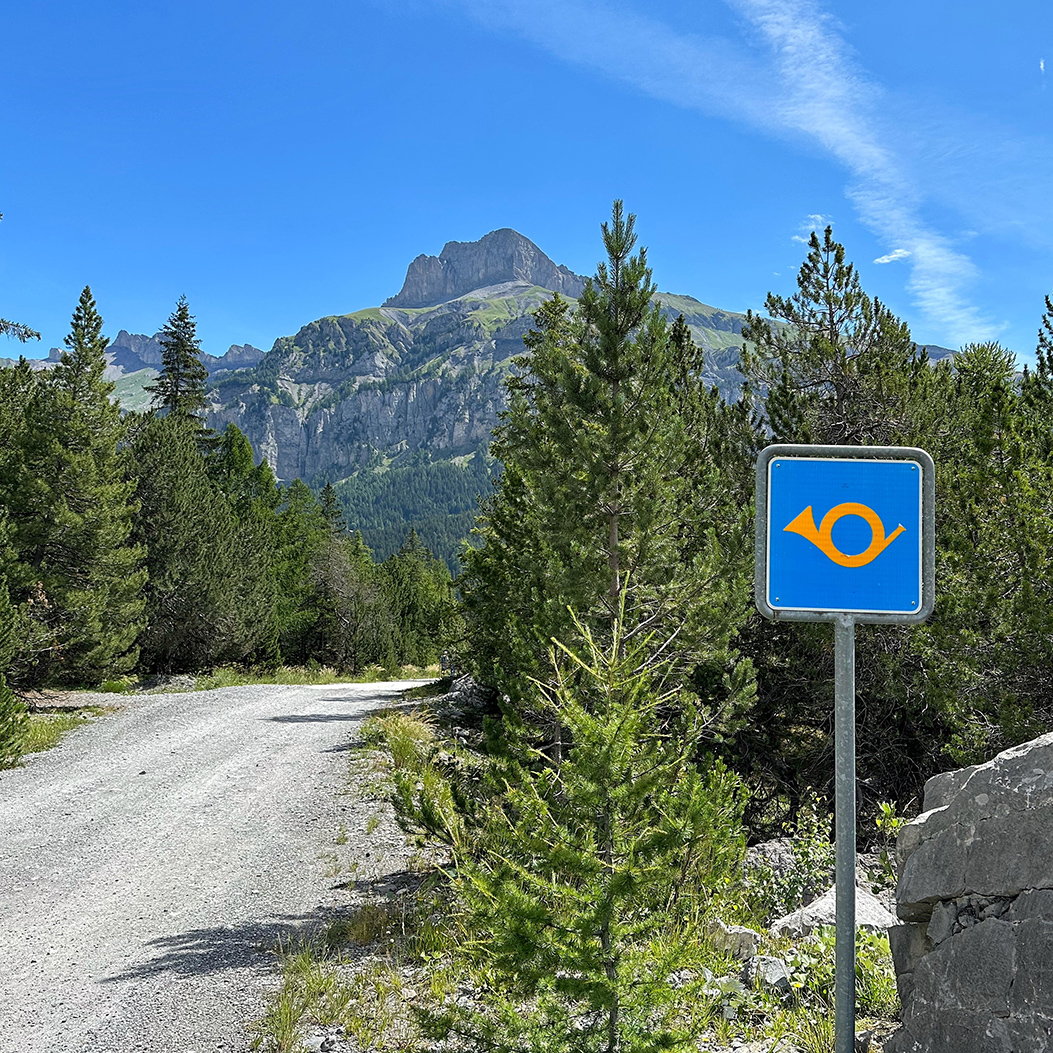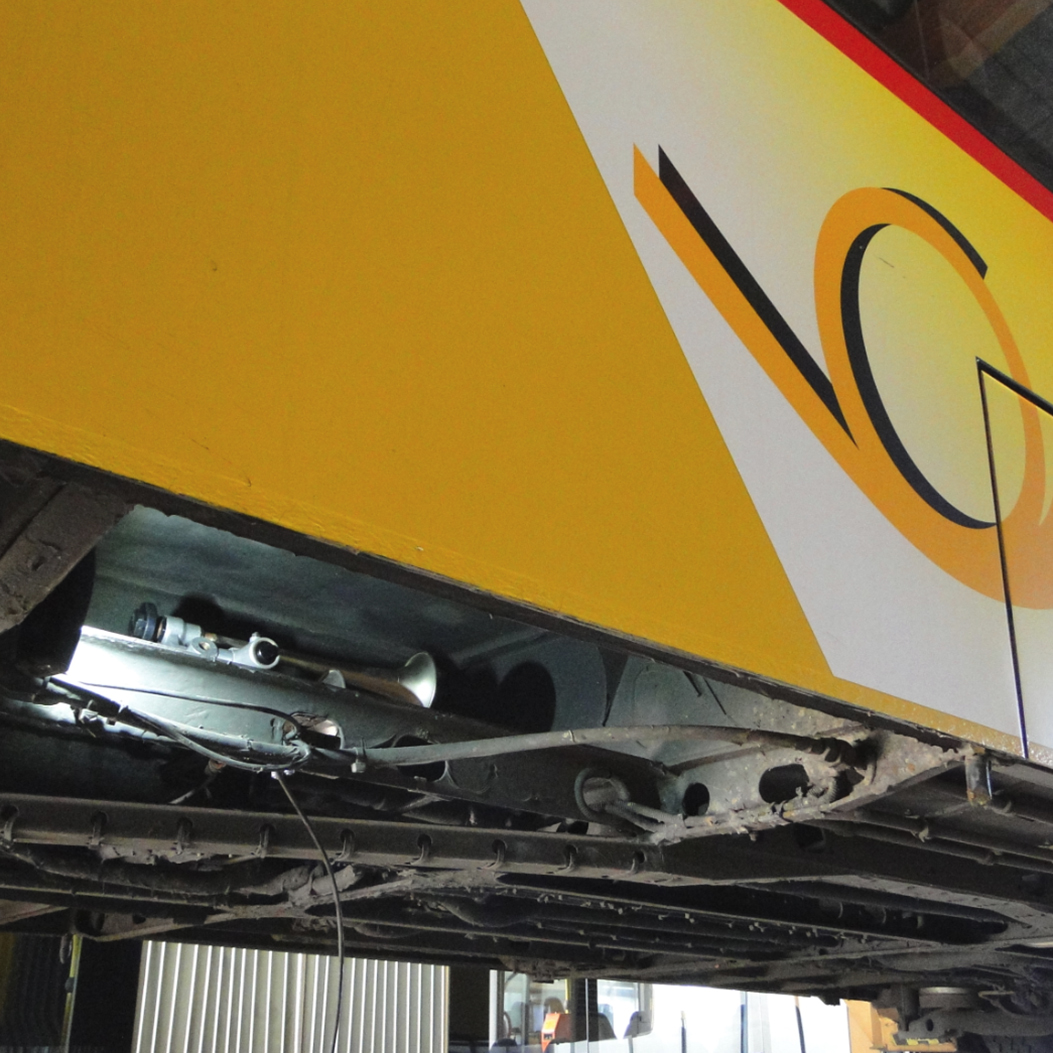Post horn
“Du-Da-Do” three-tone horn
We are proud of our post horn. It is highly symbolic with a distinctive ringing sound that evokes wonderful memories for our passengers.

Three tones in the service of a strong brand
If there were such a thing as an inventory of typical Swiss characteristics, the Postbus three-tone horn would have to be part of it. Along with the yellow colour of the vehicles themselves, it is the most important badge of recognition of our national transport company, and very much characterizes our brand. Hearing the word “Postbus” reminds many people of school trips or holiday outings on winding roads, and leaves the three-tone “Du-Da-Do” ringing in their ears. Even today, Postbus drivers use the horn when driving on mountain roads.
Three-tone horn – original

Origin of the three-tone horn
Post horns have been in use since the era of the horse coach service. Stage-coachmen used them to announce the arrival and departure of their coaches. They used the tones of the major triad along with additional tone sequences to even provide additional information such as the number of coaches or harnessed horses. Sounding the post horn was regarded as an art form. The post horn’s melodies found their way into music during the Baroque period, from the 16th-18th century. Later, the reverse happened, and the three-tone sequence found its way from music back into the post horn: the C sharp - E - A sequence used today is originally derived from Gioachino Rossini’s “William Tell”. It has remained unchanged since 1924 and the three-tone sound is still made from three metal horns attached under the Postbus.
Three-tone horn – Gioachino Rossini and the post horn

The three-tone horn for improved road safety
It wasn’t only Swiss Post buses using the tight mountain roads when motorized Alpine post first appeared in 1919. There were an ever-growing number of private cars, too. Accidents were frequent, and Swiss Post decided that Postbus drivers should sound a horn to warn other road users about blind spots. The first hand-operated horns couldn’t be heard past a short distance, however. A group of Swiss Post experts commissioned the Paris-based company Cicca to build a three-tone horn with an electric compressor.
This resulted in the prototype of the Postbus three-tone horn, which is still built into the vehicles to this day. The first Postbus to take to the roads with such a horn was in 1924. The Second World War put a stop to the import of Cicca horns from France, so from then on, the licence to produce the horns alternated between three Swiss manufacturers.

Mountainous postal routes
The reason that so many people primarily associate the post horn with mountain trips is simple: use of the horn is restricted to mountainous postal routes, which are designated by a yellow horn on a blue background. Today, nobody knows how many mountainous postal routes there are in Switzerland, because the cantons have been responsible for signposting since 1992 and there is no overall list of these routes. But everybody knows that Postbus drivers sometimes make an exception and sound the horn on other roads. This of course means that the buses have to be equipped with a horn in the first place, which is currently the case in about one third of the more than 2,000 PostBus vehicles.

The three-tone horn in Postbuses
Outsiders are often amazed to discover that three-tone horns are not part of the standard equipment included in Postbuses. However, the three-tone horns haven’t been discontinued: PostBus equips up to 40 new vehicles with post horns every year. The Emmental company Moser-BaerTarget not accessible is now solely responsible for their production. Because the number is manageable, the staff there build horns for PostBus by hand. Moser-Baer also repairs and cleans three-tone horns because they generally have a longer service life than the vehicles, which are usually replaced after 12 years.
PostBus disassembles the horns in all decommissioned vehicles. The reason for this is simple: the three-tone horn is a registered trademark and should be used only for its intended purpose in PostBus vehicles. This means that the horn has already been dismantled when PostBus sells older vehicles to used vehicle dealers. The fact remains: if you want to hear the three-tone horn in action, you should treat yourself to a trip on one of the PostBus mountain routes and ask your Postbus driver to sound the horn now and again – to the delight of passengers young and old.


